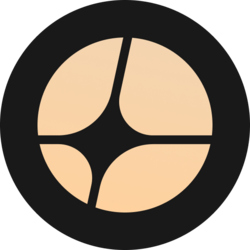A patch with dozens of millions of microscopic nanoagujas could replace traditional biopsies, an alternative -indolora and less invasive- that can help millions of patients worldwide that every year need biopsies to detect and control diseases such as cancer and Alzheimer’s.
Biopsy are one of the most common diagnostic procedures worldwide but can cause pain and complications, and can deter patients from looking for an early diagnosis or follow -up tests.
Traditional biopsies also extract small fragments of tissue, which limits the frequency and exhaustivity with which doctors can analyze sick organs such as brain.
Now, King’s College scientists in London developed a nanoagujas patch that collects molecular information from the tissues without extracting them or damaging them, which could help health teams to control the disease in real time and to repeat the tests in the same area as many times as necessary, something impossible to do with standard biopsies.
Since the nanoagujas are a thousand times finer than a human hair and do not extract tissue, they do not cause pain or damage, which makes the process less painful for patients compared to standard biopsies.
For many, this could mean a more early diagnosis and more regular monitoring, which would transform the way diseases are controlled and treated.
“This advance opens a world of possibilities for people with brain cancer, Alzheimer’s and for the progress of personalized medicine. It will allow scientists, and eventually doctors, studying the disease in real time as never before,” says Ciro Chiappini, director of the research that has been published on Monday at the Nature Nanotechnology.
You may be interested: study link alcohol consumption with a higher incidence of pancreatic cancer
Nanoagujas could be used for brain surgeries
In preclinical studies, the team applied the patch to cancerous brain tissue extracted from human biopsies and mice. Nanoagujas extracted “molecular footprints” – including lipids, proteins and RNAs – from cells, without eliminating or damaging the tissue.
Then they analyzed the footprint with mass spectrometry and artificial intelligence, which gave them detailed information about the presence of a tumor, their response to the treatment and cell evolution of the disease.
“This approach provides multidimensional molecular information from different types of cells within the same tissue. Traditional biopsies simply cannot do that. And since the process does not destroy the tissue, we can take samples of the same tissue several times, which was previously impossible,” says Chiappini.
Technology could be used during brain surgery to help surgeons make faster and more precise decisions. For example, when applying the patch in a suspicious zone, results could be obtained in 20 minutes and guide decisions in real time on the removal of cancerous tissue.
Manufactured with the same manufacturing techniques as computer chips, nanoagujas can integrate into common medical devices, such as bandages, endoscopes and contact lenses.
This advance was possible thanks to the close collaboration between nanoingenier, clinical oncology, cell biology and artificial intelligence, each of which has provided essential tools and perspectives that, together, have given rise to a new approach to non -invasive diagnosis.
With EFE information
Do you like photos and news? Follow us on our Instagram












































